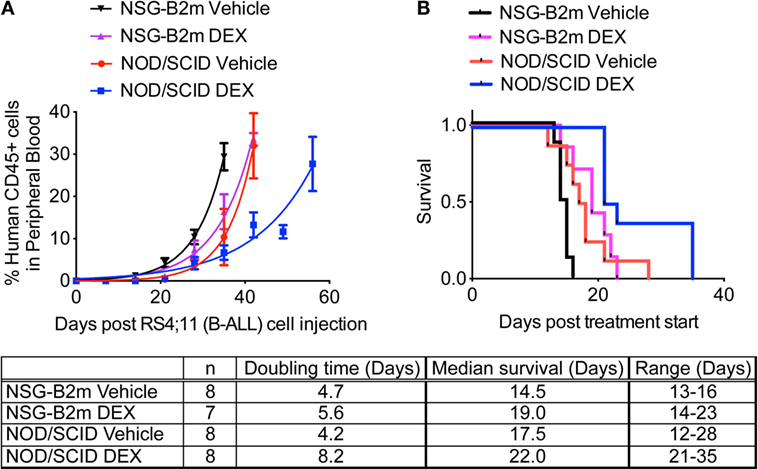

These disadvantages might impede further application of this humanized mouse model. Moreover, these mice also show low and variable levels of T-cell-dependent antibody responses (Shultz et al., 2007). For example, NOD- scid Il2rg − / − mice lack appropriate MHC molecules for T-cell selection in the thymus and some human-specific cytokines required for engrafted human cell development and survival. Combined, these immunodeficiency advantages make NOD- scid Il2rg − / − mice excellent recipients to carry out in vivo studies of human cells, tissues and organs, especially for generating humanized mouse models, which can provide insights into in vivo human biology and be utilized in many pre-clinical research fields.Īlthough the NOD- scid Il2rg − / − mice are highly immunodeficient and humanization on these mice has proved to be a powerful and valuable model to in vivo study of human disease, there are still some obvious defects in their application for generating humanized mice. Moreover, the Il2rg − / − targeted mutation completely deletes the interleukin 2 receptor gamma chain (Il2rg), a common component of many cytokines involved in immune function such as IL-2, IL-4, IL-7, IL-9, IL-15 and IL-21, making these mice extremely deficient in NK cells which enables xenotransplantation of human cells (Cao et al., 1995). The immunodeficient non-obese diabetic (NOD) genetic background contributes to deficiency in innate immunity with impaired dendritic cell function and macrophage activity (Shultz et al., 1995), and the Prkdc scid mutation leads to elimination of adaptive immunity by loss-of-function of the Prkdc gene, whichĮncodes a protein critical for V(D)J recombination in T and B lymphocyte maturation (Blunt et al., 1995). One significant breakthrough in generating humanized mice was the development of NOD- scid Il2rg − / − mice, which are double homozygous for the severe combined immunodeficiency (SCID) mutation and interleukin-2Rg ( Il-2Rg) allelic mutation (gamma c null) (Ito et al., 2002). To further enhance our understanding of human hematopoiesis, innate immunity, infectious diseases, cancer biology and regenerative medicine. Requires higher dose of irradiation to obtain human HSC engraftmentĬharles River is now able to offer importation of several additional lines of JAX ® mice including NSG ® variants for humanisation, immuno-oncology, immunology, and infectious disease studies.For decades, the stem cell field has pursued the development of humanized mice.Compromised human stem cell regeneration.No thymic lymphomas, can be used for long & short-term experiments.Engrafts a wide range if solid and hematological cancers.Engrafts human PBMC without irradiation similar to NSG.Long-term multilineage hematopoeitic stem cell repopulation similar to NSG mice.Increased efficiency of engrafting human acute myeloid leukemia (AML).

Enhances human myelopoiesis and terminal differentiation after CD34+ humanization.Increased CD4+ FoxP3+ regulatory T cell population after CD34+ humanization.Longer lifespan than NOD SCID supports long-term engraftment studies and capabilities >89 weeks median.Most sensitive host for cancer stem cells when compared to NOD SCID or nude mice.Engrafts the widest range of solid and hematological cancers, including ALL and AML.NSG-SGM3 (NSGS), NOD SCID gamma Il3- GM-SF Comparison of NSG ® Mouse Model Variants Common Name Charles River is the exclusive distributor of JAX ® Mice in Europe. NSG ® mouse model variants are the most highly immunodeficient mice and the models of choice for cancer xenograft modelling, stem cell biology, humanised mice, and infectious disease research. Our Commitment to Diversity, Equity & Inclusion.Agrochemical Testing Services for Approvals.Scientific Staffing, Training, & Operations Support.Scientific & Regulatory Advisory Services.


 0 kommentar(er)
0 kommentar(er)
